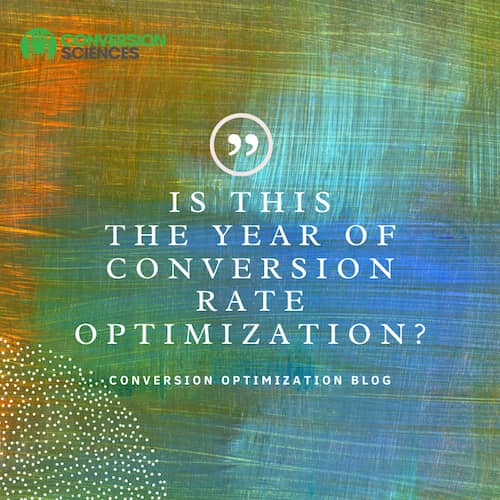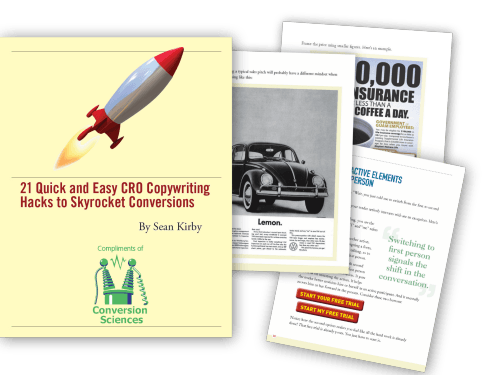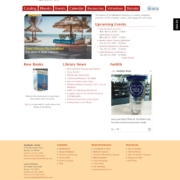Is This the Year of Conversion Rate Optimization?
This is the year for conversion rate optimization.
Still we have to remember that website optimization is at the top of the conversion stack. First you have truly know your visitor. You have to create a content platform to answer questions. You have to identify the best media strategies and channels to reach your target audience. And most importantly, you have to have the content your customers want. And then you’re ready for optimization.
This is indeed the year for website optimization. Exciting things are happening. First we have the first ever conversion conference happening in May. Now there are more resources for marketers than ever, including Google analytics and similar programs. The library of books that are now available emphasizing the importance of conversion is steadily growing. These include Avinash Kaushik, Tim Ash, and Brad Geddes are some of the best.
Still we have to remember that website optimization is at the top of the conversion stack. First you have truly know your visitor. You have to create a content platform to answer questions. You have to identify the best media strategies and channels to reach your target audience. And most importantly, you have to have the content your customers want. And then you’re ready for optimization.
“What advice do you give marketers who are just getting started with conversion optimization?”
First, consider a content conversion strategy. Educate your customer about different aspect of your product and see what that can do for conversion.
Then look at what I call the “Bad boys of Conversion.” These are the experts that know how to phrase, emphasize, and structure their copy to really draw in visitors. They realize the value of imaginative copy. Study the tricks and tools that they use and apply them yourself.
Take a look at your confirmation pages and notification emails. Each of these are opportunities to get customers back to the site to finalize the purchase or to make another purchase.
“What are the biggest opportunities for conversion optimization that marketers aren’t taking enough advantage of yet?”
Marketers need to remember to test all their communication efforts to see if they are actually effective. Whether its serial testing or split testing.
Celebrate if your favorite page fails a test. Be like the The Cheerios Guy who runs around telling everyone he lowered his cholesteral. Let people know you increased your conversion rate. Be competitive and always try to improve your results.
And finally, don’t depend on IT. Set up a lab on the side utilizing the wealth of free or inexpensive tools available where you can do some basic tests.
Once you’ve proven the usefulness of these preliminary tests, it’ll be amazing how IT’s schedule for bigger testing projects seems to magically open up.
“What are the top 3 reasons optimization programs fail?”
- Resources to champion and implement the program. You need someone to really focus on optimization.
- The program doesn’t have momentum. You need to learn from each test, to understand why you got the results you did, and then draw conclusions regarding the next test that needs to be run. And then actually conduct these new tests, and DON”T WAIT to do it. You’ll lose momentum. In other words, use your data to take action.
- Really emphasize making analytics and conversion as part of company culture.
Will this be the Year of Conversion Rate Optimization for your Company?
Tired of redesigning your site only to get zero results? Our conversion-centered website redesign method guarantees results in weeks, not months.
Test, analyze and redesign your website to improve conversions with the best CRO agency in town.




![Wasp-Redesign-Process_thumb[1] The Waspbarcode.com redesign process.](https://conversionsciences.com/wp-content/uploads/2015/05/Wasp-Redesign-Process_thumb1-180x180.gif)













Agree with the points you made above Brian. Quite insightful.
Thanks for the kind words.
Thanks for the article Brian. Yes, more and more of our clients use our transcription service http://voicetranscribing.com to transcribe their podcasts, webinars, interviews and generate content for blog posts.
Hi Kristi,
I can respond with a lengthy comment, arguing the futility and wastefulness in running A/A or A/A/B etc. test, but I’ve already done an article on that back in 2014, so I’ll just share that: http://blog.analytics-toolkit.com/2014/aa-aab-aabb-tests-cro/ If you’d like to check it out and, hopefully, respond to it I think it will be beneficial for the readers of this blog.
Kind Regards
Georgi
Thanks, Georgiev. When you have a test setup that spans multiple domains, servers and security features, an A/A test is critical. We have been saved by A/A tests. In response to your excellent article I ask, “Which is more wasteful: Running a series of A/A tests or running a series of A/B tests that result in the wrong decisions?” The latter can impact sales for months or years.
Sounds like an unusually complicated test setup there, Brian. What kind of problems did those many A/A tests reveal? Randomization issues? User experience uniformity issues? Statistical engine issues? I’m just thinking there has to be a better way to detect & debug most of these, but the statistical engine ones…
We never really found the smoking gun, but we suspected cookie persistence issues, iframe security delays, page load times, etc. We redesigned the approach and verified the setup with an A/A test.
Thanks for removing my comments @bmassey:disqus.
Surely constructive criticism is part of making things better, and excluding a market leader from your “Top tools” was exactly this?
So my valid point was why not include Maxymiser? It’s a huge gap in your post.
Cut the sarcasm, @nrennie. It’s never appropriate. You commented on the wrong post here. I assume you meant to post on “The Most Recommended AB Testing Tools by Leading Experts”. I’ll reply to your comment there, but we didn’t list Maxymiser because nobody recommended it. Our team used it for one client and found it lacking on several key features.
Thank you very much. It’s hard to find articles that describe everything like this one, step by step. I have one question left. Are you saying that before starting an A/B test I should always begin with an A/A test and that the variation of the A/A is my statical significance for the A/B? It does sounds like logic, I just wanted to check it for sure. Thanks again for the article!